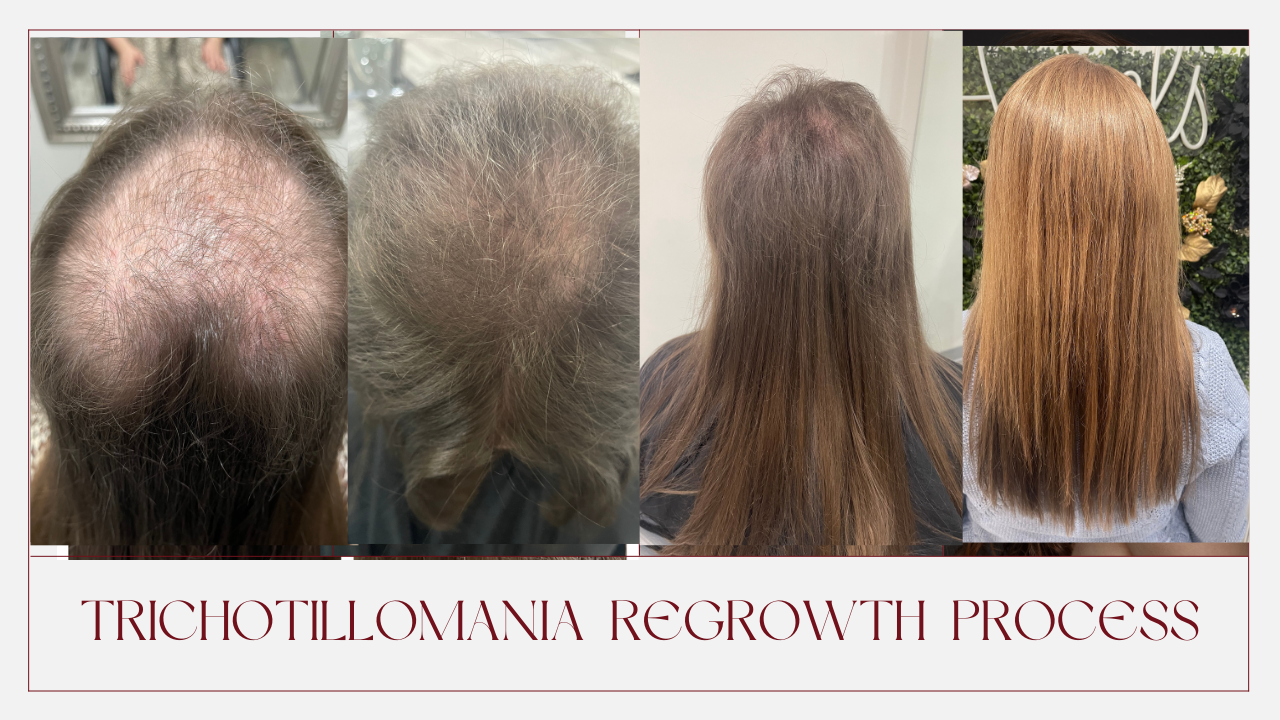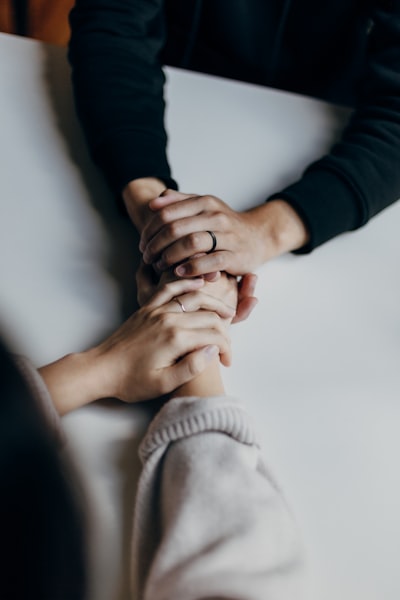Boston, MA Trichotillomania Hair Regrowth Tactics Unveiled
·
Achieving Trichotillomania Regrowth: Essential Strategies
Trichotillomania, a compulsive disorder characterized by the repetitive pulling of hair, can have a significant impact on one's mental health and well-being. Individuals with trichotillomania may experience a sense of control through their hair-pulling behavior, but it often leads to hair loss, bald patches, and distress. Complications of trichotillomania may include emotional distress, feelings of frustration and shame, and a lack of control over hair-pulling and its effects on one's social life. Fortunately, there are essential strategies and treatments available to help manage trichotillomania and promote hair regrowth, including minimizing scarring and damage to the scalp and hair follicles. In this blog, we will explore the underlying psychology of trichotillomania, recognize the symptoms, understand the causes, and discuss effective ways to overcome the disorder and minimize its negative effects on one's life, including their social life, while encouraging hair regrowth.

Understanding Trichotillomania TTM
Trichotillomania is an impulse control disorder that falls under the umbrella of mental health conditions. Individuals with trichotillomania have an uncontrollable urge to pull out their own hair, resulting in hair loss and bald patches. This compulsive hair-pulling provides a sense of control or relief from negative emotions, such as anxiety, stress, or sadness. However, the hair-pulling behavior, also known as repetitive behavior, can be distressing and impact the individual's quality of life and self-esteem, making it important to seek help from a healthcare provider familiar with the American Psychiatric Association's Diagnostic and Statistical Manual of Mental Disorders (DSM-5).

The Psychology Behind Trichotillomania Form of OCD
Trichotillomania is more than just a habit. It is a complex psychological disorder with underlying emotional triggers. Hair pulling serves as a means of coping for individuals, often providing them with a temporary sense of control or a sense of relief while engaging in activities such as eating, scrolling on your phone, or watching TV. The act of automatic pulling hair stimulates the release of serotonin, a neurotransmitter associated with feelings of well-being. However, the relief is temporary, and the cycle of hair-pulling can lead to hairball-like blockages in the digestive tract. Understanding the psychology behind trichotillomania is crucial in finding effective treatment methods.

Recognizing Symptoms of Trichotillomania
Recognizing the symptoms of trichotillomania is essential for seeking appropriate support and treatment. Here are some key symptoms to look out for:
- Repetitive pulling of hair, leading to hair loss or bald patches.
- Feelings of shame, guilt, or embarrassment associated with hair-pulling behavior.
- Significant distress and impact on the individual's quality of life.
- Preoccupation with hair pulling is often accompanied by tension or an irresistible urge to pull.
- Spending excessive time pulling hair, may interfere with daily activities.
- It is important to note that the severity of trichotillomania can vary, from mild hair pulling to more severe cases resulting in noticeable hair loss and baldness. Seeking professional help from a healthcare provider or mental health specialist is essential for proper diagnosis and treatment.
Causes of Trichotillomania
The exact cause of trichotillomania is not fully understood, but researchers believe it is a combination of genetic, environmental, and emotional factors. Some of the potential contributing factors include:
- Emotional triggers, such as stress, anxiety, or boredom, can prompt hair-pulling episodes in individuals with trichotillomania.
- There may be a genetic predisposition to the disorder, as trichotillomania tends to run in families.
- Environmental factors, such as traumatic experiences or a history of abuse, may contribute to the development of trichotillomania.
- Understanding the interplay of these factors can help in developing effective interventions and treatment strategies for trichotillomania.
Emotional Triggers for Trichotillomania
Emotional triggers, such as stress, anxiety, or frustration, play a significant role in trichotillomania. Individuals with trichotillomania may turn to hair pulling as a way to cope with negative emotions, seeking temporary relief or control. Identifying and addressing these emotional triggers is essential for managing the disorder effectively.
Coping strategies, relaxation techniques, and mindfulness practices can help individuals mitigate emotional triggers for trichotillomania (TTM). Engaging in activities that promote relaxation, such as deep breathing exercises, meditation, or yoga, can assist in reducing the urge to pull hair. Seeking therapy or counseling, including the use of SSRIs and behavior therapy such as habit reversal training, can also provide valuable support in developing healthier coping mechanisms and addressing underlying emotional issues through the treatment of trichotillomania.
Interplay of Genetics and Environment
The development of trichotillomania is influenced by the interplay of genetic and environmental factors. While the exact genes associated with the disorder are not yet identified, research suggests that there is a genetic predisposition to trichotillomania.
Environmental factors, such as traumatic events, high levels of stress, or childhood adversity, can further contribute to the manifestation of trichotillomania. A family history of trichotillomania or other compulsive disorders also increases the risk of developing the condition.
Understanding the underlying genetic and environmental factors can guide treatment approaches and help individuals with trichotillomania manage the disorder more effectively.
Impact of Trichotillomania on Hair Health
Trichotillomania can have a profound impact on hair health. The repetitive pulling of hair can lead to hair loss, resulting in bald patches, and damage the hair shaft. The severity of hair loss can vary, with some individuals experiencing more noticeable effects.
It is essential to address trichotillomania promptly to minimize the impact on hair health and promote regrowth. Understanding the hair growth cycle and the effects of trichotillomania on it is crucial in developing effective strategies for regrowth.
Hair Loss due to Trichotillomania
Hair loss is a common consequence of trichotillomania, with the severity of hair loss varying among individuals. Some may experience mild hair loss, while others may develop bald patches, particularly on the scalp, eyelashes, or eyebrows.
In more severe cases, trichotillomania can lead to alopecia areata, an autoimmune condition characterized by the loss of patches of hair. This further emphasizes the importance of addressing trichotillomania and seeking appropriate treatment to prevent hair loss and promote regrowth.

The Hair Growth Cycle and Trichotillomania Pulling
Trichotillomania disrupts the natural hair growth cycle, leading to irregular regrowth patterns and further hair loss. Understanding the hair growth cycle is essential to comprehend the effects of trichotillomania and develop strategies for hair regrowth.
The hair growth cycle consists of three phases: the anagen phase (active growth phase), the catagen phase (transition phase), and the telogen phase (resting phase). In trichotillomania, hair pulling interrupts the normal hair growth cycle, resulting in uneven regrowth and the potential for bald patches.
By focusing on behavioral therapy and habit reversal training, individuals can work towards breaking the cycle of hair pulling, allowing the hair growth cycle to restore to normal. This, in turn, promotes more uniform and healthy regrowth of hair.
Overcoming Trichotillomania
Overcoming Trichotillomania requires a comprehensive treatment approach that addresses both the underlying causes and the hair regrowth aspect of the disorder. Various treatment options are available, including therapy, behavioral interventions, and self-help strategies, to help individuals manage and conquer trichotillomania.
Steps to Stop Hair Pulling
To stop hair pulling and manage trichotillomania effectively, the following steps can be taken:
- Identify triggers: Recognize the situations, emotions, or thoughts that trigger hair-pulling episodes.
- Implement habit reversal: Develop alternative behaviors, such as clenching fists or squeezing stress balls, to replace hair pulling.
- Practice relaxation techniques: Engage in activities that promote relaxation, such as deep breathing, meditation, or yoga, to manage the urge to pull hair.
- Set achievable goals: Break the cycle of hair pulling by gradually reducing the frequency and intensity of the behavior.
- Consider behavioral therapy: Working with a mental health professional can provide valuable guidance and support in overcoming trichotillomania. Behavioral therapy, such as habit reversal training, may be recommended.
Consider A Hair Barrier; A hair topper, mesh integration system affixed with a beaded matrix allows for awareness, and stops you from pulling. Only 1% of those wearing will pull it off.

Essential Strategies for Hair Regrowth
While overcoming trichotillomania is crucial, promoting hair regrowth is also an essential aspect of the treatment process. Incorporating strategies that focus on hair restoration can help individuals regain their confidence and restore healthy hair growth.
Daily Routines for Hair Regrowth & Supplements
Establishing daily routines that prioritize hair regrowth can be beneficial. Consider the following practices:
- Scalp massages: Gently massaging the scalp with essential oils, such as lavender or rosemary, can stimulate blood flow and promote hair growth.
- Nutrition: Ensuring a well-balanced diet rich in essential vitamins and minerals, such as iron, biotin, and vitamin D, can support healthy hair regrowth.
- Supplements: Consult with a healthcare provider to determine if supplements, such as biotin or omega-3 fatty acids, may be beneficial for hair regrowth.
- Protective hairstyles: Shield regrowth areas with protective hairstyles, such as braids or updos, to prevent further hair-pulling damage.
- Avoid harsh hair treatments: Minimize the use of heat-styling tools, chemical treatments, or tight hairstyles that can cause further hair loss or damage.
Hair Systems Create a Barrier to Prevent Hair-Pulling
Hair systems, such as wigs or hair toppers, offer a physical barrier to prevent hair-pulling behaviors. These innovative solutions can be customized to cover specific areas affected by hair pulling, providing an added layer of protection for regrowth areas.
The use of hair systems has several benefits in managing trichotillomania:
- Physical barrier: Hair systems provide a protect barrier preventing direct access to the hair and reducing the opportunity for hair pulling.
- Regrowth maintenance: The hair system shields regrowth areas, allowing the hair to grow without further damage.
- Enhanced appearance: Properly fitted hair systems enhance the natural appearance of the hair, providing individuals with a boost in confidence and self-esteem.
- Non-invasive solution: Hair systems offer a non-invasive alternative to hair transplantation, allowing individuals to explore regrowth options without surgery.
Versatile attachment: Innovative attachment methods, such as the beaded matrix, provide a secure and gentle attachment, promoting regrowth and avoiding scalp damage.
- For individuals struggling with trichotillomania, hair systems can serve as a valuable tool in preventing hair pulling and promoting healthier hair regrowth.
Before and After Picture After One Year of Wearing a Hair Topper
Visual representations of before and after pictures can provide powerful evidence of the regrowth progress achieved through the use of a hair topper. These images depict the emotional and physical changes experienced by individuals over one year.s highlight the regrowth potential and the impact of the hair topper in the restoration journey. Sharing success stories through these visuals inspires hope, encouragement, and the realization that trichotillomania can be managed effectively.
Before
2 Months Later

6 Months Later

After

Trichotillomania Regrowth
In conclusion, regrowing hair after trichotillomania can be a challenging process, but it is possible with the right strategies and support. Understanding the psychology behind trichotillomania and recognizing its symptoms is crucial in overcoming this condition. Emotional triggers, genetics, and environment also play a role in its development. Taking steps to stop hair pulling, such as cognitive behavioral therapy, can help break the habit and prevent damage to eyebrow hair. Additionally, incorporating daily routines for hair regrowth and using hair systems as a barrier can aid in the recovery process. Remember, everyone's journey is unique, and results may vary. With patience, perseverance, and the right resources, achieving trichotillomania regrowth and preserving eyebrow hair is attainable.






